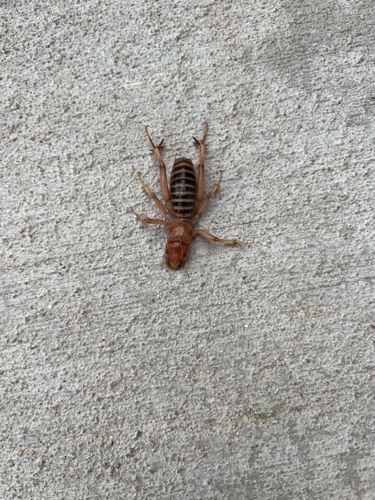Jerusalem Cricket (also known as Potato Bug, Child of the Earth, Nina de la Tierra, Stone Cricket, Cara de Niño)
Scientific Name: Stenopelmatus spp. (There are many species within this genus, and without more specific details or location, precise identification to the species level is difficult.)
Order & Family: Order: Orthoptera, Family: Stenopelmatidae
Size: Generally range from 1 to 2.5 inches (2.5 cm to 6.5 cm) in length.

Natural Habitat
Typically found in moist, loose soil, under rocks, logs, or decaying vegetation. They prefer gardens, agricultural fields, and sandy or loamy areas in the western United States, Mexico, and Central America. They are subterranean for most of their lives.
Diet & Feeding
Mainly omnivorous scavengers. They feed on decaying plant matter, roots, tubers (hence 'Potato Bug'), and various other insects, both living and dead. They can be considered garden pests due to their root-eating habits.
Behavior Patterns
Night-active, solitary, burrowing insects. They dig burrows using their strong forelegs and jaws. When threatened, they can emit a foul-smelling fluid. They are known for their distinctive body shape and large heads, which are adapted for digging.
Risks & Benefits
Potential risks include their ability to deliver a painful bite if handled, though they are not venomous. They can also be agricultural pests, damaging crops like potatoes and other root vegetables. Benefits include their role as decomposers in the ecosystem, breaking down organic matter, and as a food source for larger animals.
Identified on: 8/24/2025